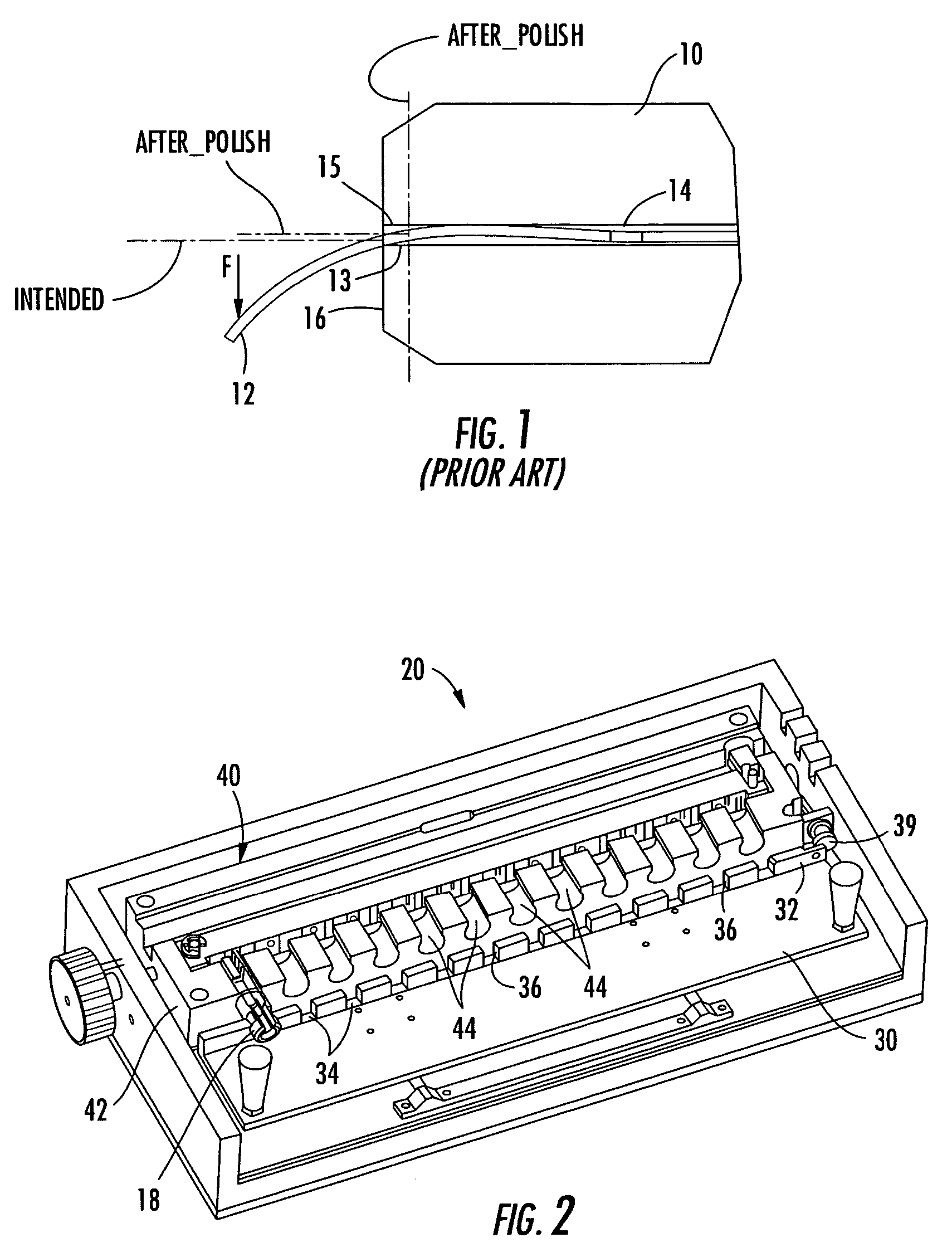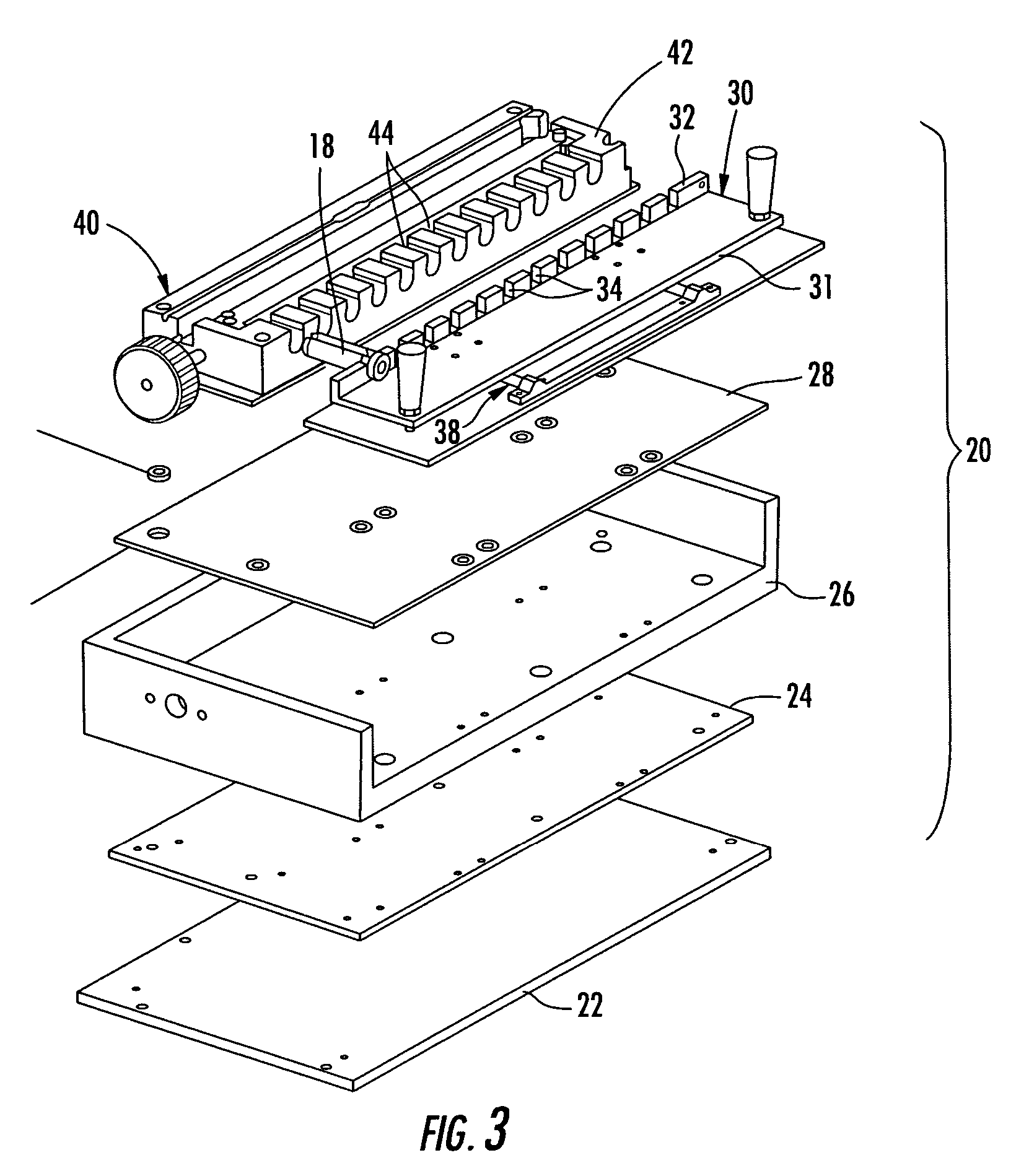Method and apparatus for positioning an optical fiber
a technology of optical fiber and positioning device, applied in the field of optical fiber positioning device, can solve the problems of loss or attenuation of signal, physical damage that may be present at the end face, lateral displacement or offset of optical fiber of two mated connectors, etc., and achieve the effect of reducing the amount of optical fiber bending
- Summary
- Abstract
- Description
- Claims
- Application Information
AI Technical Summary
Benefits of technology
Problems solved by technology
Method used
Image
Examples
Embodiment Construction
[0031]This invention now will be described more fully hereinafter with reference to the accompanying drawings, in which preferred embodiments of the invention are shown. This invention may, however, be embodied in many different forms and should not be construed as limited to the embodiments set forth herein; rather, these embodiments are provided so that this disclosure will be thorough and complete, and will fully convey the scope of the invention to those skilled in the art. Like numbers refer to like elements throughout.
[0032]FIG. 1, as previously discussed, illustrates the effect of directing an end portion of an optical fiber 12 to desired position in a bore 14 of a ferrule 10. The optical fiber 12 is shown installed in the bore 14 of the ferrule 10. A force F is applied to the optical fiber 12, downward in FIG. 1, to push the optical fiber 12 to a lower side 13 of the bore 14. The optical fiber 12 is thus subjected to a bending moment that causes the optical fiber 12 to bend ...
PUM
 Login to View More
Login to View More Abstract
Description
Claims
Application Information
 Login to View More
Login to View More - R&D
- Intellectual Property
- Life Sciences
- Materials
- Tech Scout
- Unparalleled Data Quality
- Higher Quality Content
- 60% Fewer Hallucinations
Browse by: Latest US Patents, China's latest patents, Technical Efficacy Thesaurus, Application Domain, Technology Topic, Popular Technical Reports.
© 2025 PatSnap. All rights reserved.Legal|Privacy policy|Modern Slavery Act Transparency Statement|Sitemap|About US| Contact US: help@patsnap.com



